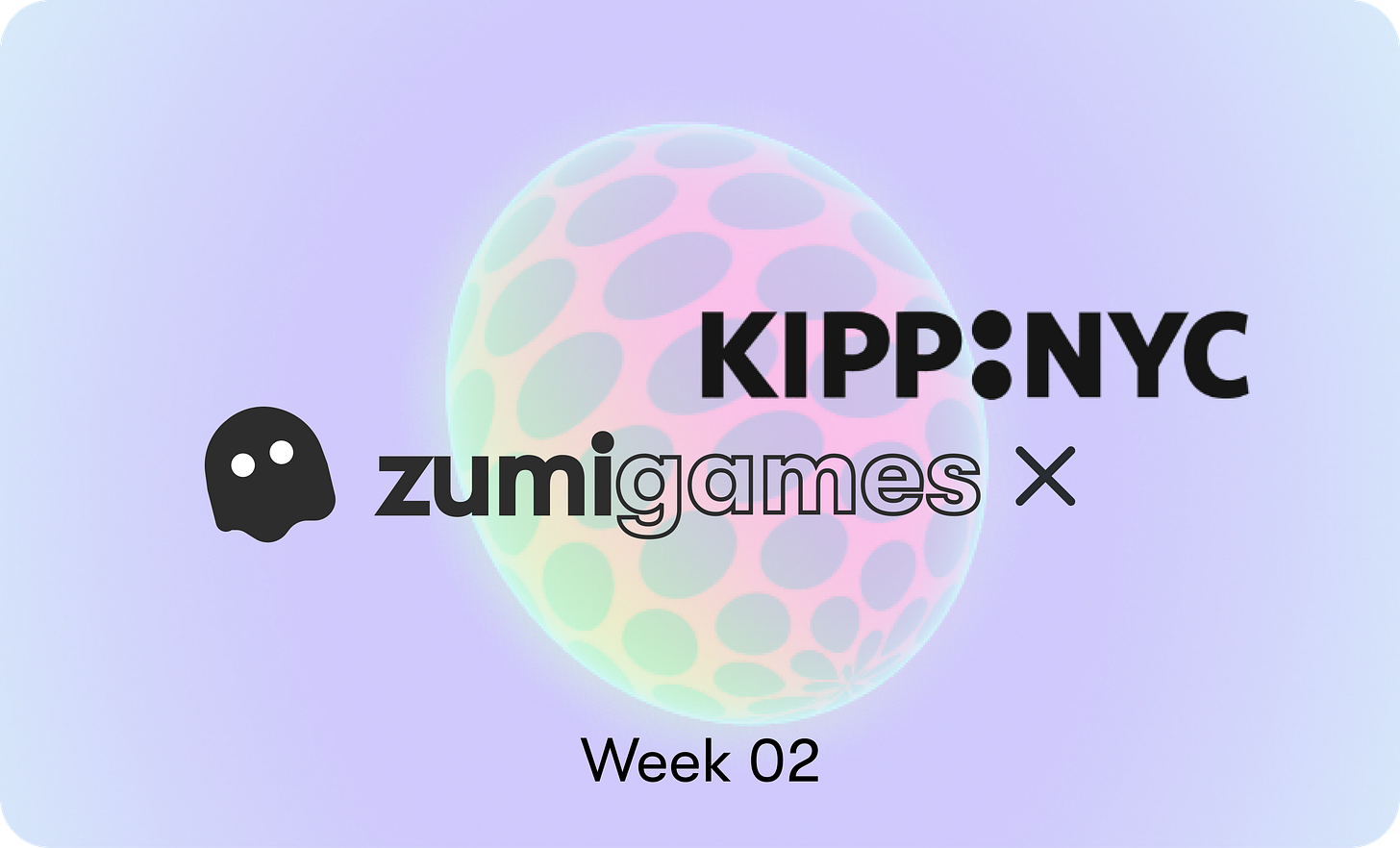Week 02 with KIPP Interns: Building Brand Identity & Social Strategy for Zumi Games
This week, interns mapped out who Zumi is for and how to speak their language online.
This spring, our team at Zumi Games is partnering with KIPP NYC and Tech:NYC to host a group of high school interns for a multi-week, hands-on experience in digital product development, branding, and creative marketing. The goal of the program is to provide real-world exposure to how games are built, positioned, and shared with the world while giving interns the opportunity to shape how a real product connects with its users.
After Week 01 introductions, we began our program with a deep dive into branding, target audiences, and how to craft a compelling social media strategy for Zumi Games. Week 02 kicked things off with a focus on storytelling, audience insight, and how we build a brand voice that resonates with players.
Here's a recap of what we explored and created together.
Product Deep Dive: What is Zumi Games?
We started the session by revisiting what Zumi Games is all about. Interns got hands-on time exploring the site (currently at tapaigames.com, soon to be zumigames.com), where users can compete in mini-games, earn rewards, and interact with a personal character called a Zumi—a ghost-like avatar that gets happier as you feed it candy earned through gameplay.
New features discussed included:
Leaderboards: Competitive rankings per game
Weekly challenges: A rotating, site-wide game prompt to keep things fresh
Daily rewards: “Candies” to feed your Zumi
Avatar system: A Tamagotchi-style character that reflects your play and progression
Interns tested out these features directly and gave feedback on mobile usability and which games they gravitated toward.
Brand Framing & Audience Insights
We explored the concept of brand framing—how visual identity, voice, platform choices, and storytelling shape how a brand is perceived. Through discussion, interns mapped how global brands like Nike, PlayStation, and Apple develop distinct vibes, and how Zumi Games could do the same.
Students also collaborated to build a sample user persona: Chase, an outgoing, competitive teen who enjoys sports, casual gaming, and quick-play mobile experiences. Chase doesn’t care much about showing off scores to strangers—but definitely wants to beat their friends!
Together we identified what motivates players like Chase:
Quick fun during commutes or breaks
Competitive challenge and personal bests
Simplicity and familiarity (e.g., games like Flappy Bird or 2048)
A sense of progress through rewards and new features.
Defining Voice & Tone
Interns brainstormed what kind of tone would best suit Zumi Games. The top descriptors they landed on were:
Playful
Competitive
Youthful
Vibrant
Funny
We talked about how this voice might come across on social media: not too corporate or polished, but something fun, memeable, and relatable to teens who are tech-savvy and trend-aware.
Channel Strategy & Content Ideas
The class then turned to where Zumi Games should show up. Based on our Chase persona, interns picked platforms like TikTok, YouTube, Discord, and even Facebook as potential fits.
TikTok: Meme challenges, leaderboard reactions, daily Zumi check-ins
YouTube: Game trailers, community shoutouts, high score showcases
Discord: A community hub for players to talk trash, share tips, and flex high scores.
Engagement & Virality
Finally, we talked about what makes content engaging. Interns learned that the best posts make you feel something and inspire:
Friendly competition
Community participation
Humor and chaos
Remixing and resharing
📚 Homework for Week 03
Interns were assigned to research social trends and come back with suggestions for how Zumi Games could prioritize platforms and grow its player base through smart, fun, and viral content.
Next week: Content creation and production—we’ll bring these ideas to life!




